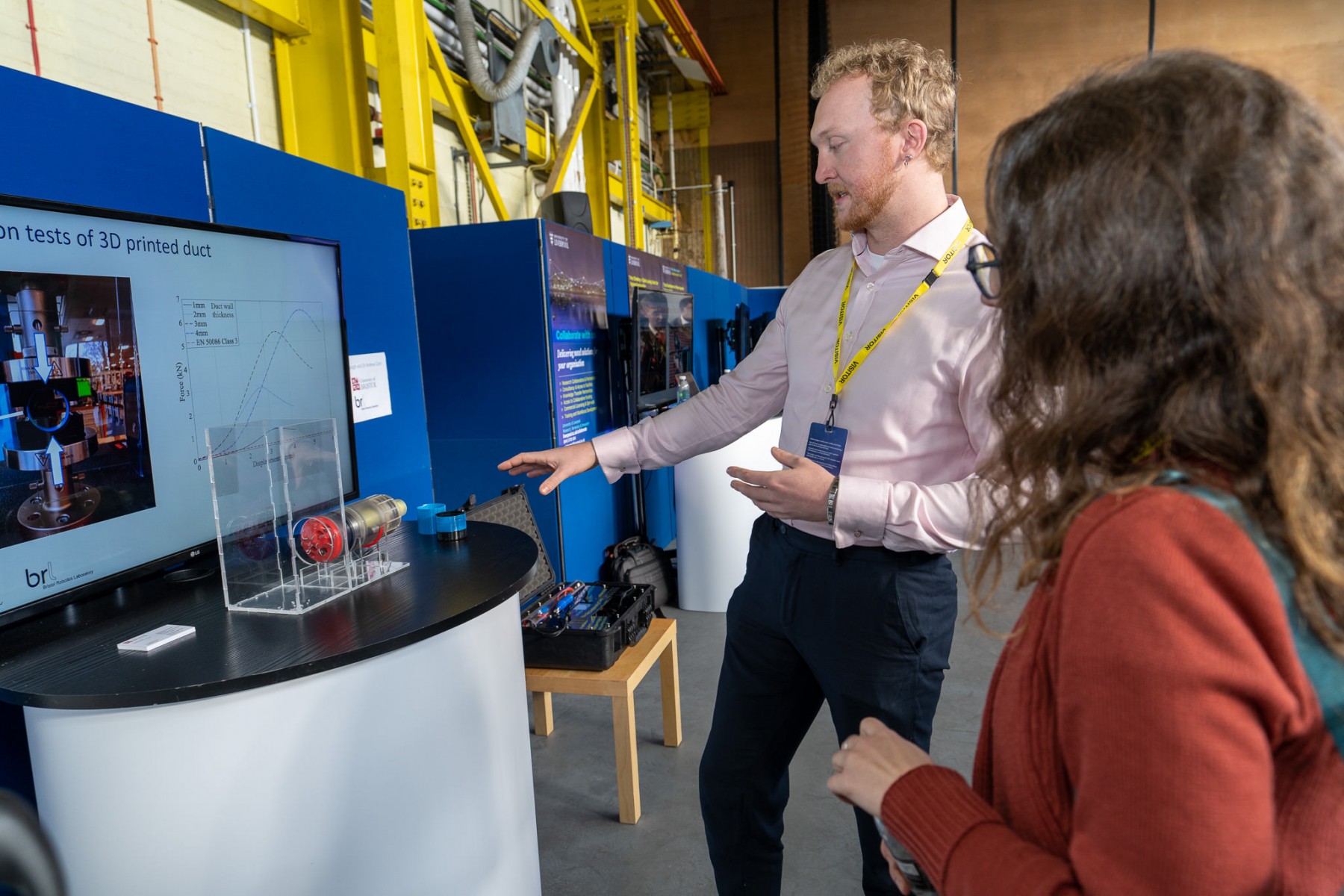BT opens UK’s first telecoms robotics test lab to speed infrastructure rollout
BT today announced the opening of a 5000+ sq. ft. robotics research facility at the BT Labs, Suffolk, which aims to place the UK at the forefront of a new era of robotics development for telecoms and civil engineering. The facility will play a key role in developing innovative robotics solutions to speed the deployment of essential infrastructure, working with the university sector and other utilities to trial a new range of UK-developed robotics which are applicable to telecoms and utility sector civil engineering challenges worldwide.
The lab is the first dedicated telecoms civil engineering robotics test facility in the UK, designed to help BT engage with the university sector and robotics startups as they develop robotic solutions to challenging civil engineering tasks. This includes addressing problems such as how to clear out blocked ducts, mend collapsed ducts and install new fibre network infrastructure without incurring the cost and delays that come with digging up roads and pavements.
New robotic locomotion and excavation techniques inspired by digging and burrowing mammals and insects, coupled with the latest technologies developed for space exploration, aerospace and medical applications are showing real promise for delivering so-called ‘trenchless’ infrastructure deployment. Magnetic, climbing and cable-traversing robotic techniques are also maturing, enabling proof-of-concept trials on wireless tower and overhead cable poles.
It is expected that the test lab will play an important role in supporting BT’s fibre programme, as well as facilitating collaboration with other utilities such as power and water companies as they roll out and update their underground and overhead networks.
The site is a unique indoor facility that will enable research teams to trial the latest innovations in robotics within a variety of test zones. The facility emulates three different types of environments in which testing can be carried out:
- Underground environment: The facility includes several test beds that can be filled with different soil and aggregate types to replicate the terrain that creates challenges for laying ducts and fibre across the country. The compaction, moisture content and stone content can all be controlled within these environments to test the ability of robots to dig pathways for ducts or direct-in-ground fibre. The test beds will also provide demanding environments for fibre sensing and robotics steering tests.
- In-duct environments: Pipe stands are used at the facility to construct duct runs, using specially manufactured transparent versions of BT ducts. This enables replication of the scenarios whereby a duct collapses or becomes blocked with silt build up.
- Overhead environments: The facility holds a full height telegraph pole, with platform access to allow different pole-top fixtures to be fitted. This creates opportunities to test robots that can lift tools, equipment or cable to the top of a pole. Cables can be run to another pole to provide a single 35m span for development of cable-car-like devices for pulling in new cables or dealing with tree canopies that could damage an existing cable. A series of shorter posts provides a ‘pole-transit’ testbed for developing other cable-travelling devices.
Professor Tim Whitley, BT’s MD of Research, said: “The UK is a hotbed of civil engineering innovation, with a thriving university ecosystem and an enviable robotics startup sector. Our aim is to bring those players together in a dedicated facility to develop solutions that make the UK a world leader in telecoms civil engineering robotics. The lab will provide a hub for the creation of solutions to real world challenges and pioneering applications of robots, reinforcing the UK’s position at the heart of research and innovation into advanced technologies.”
BT Group is the UK’s leading telecommunications and network provider and a leading provider of global communications services and solutions, serving customers in 180 countries. Its principal activities in the UK include the provision of fixed voice, mobile, broadband and TV (including Sport) and a range of products and services over converged fixed and mobile networks to consumer, business and public sector customers. For its global customers, BT provides managed services, security and network and IT infrastructure services to support their operations all over the world. BT consists of four customer-facing units: Consumer, Enterprise, Global and its wholly-owned subsidiary, Openreach, which provides access network services to over 650 communications provider customers who sell phone, broadband and Ethernet services to homes and businesses across the UK.
For the year ended 31 March 2021, BT Group’s reported revenue was £21,331m with reported profit before taxation of £1,804m.
British Telecommunications plc is a wholly-owned subsidiary of BT Group plc and encompasses virtually all businesses and assets of the BT Group. BT Group plc is listed on the London Stock Exchange.
For more information, visit www.bt.com/about






